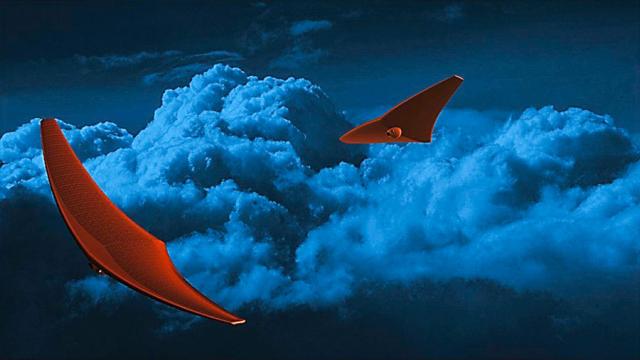Researchers with the University at Buffalo are working on a conceptual design that would see a morphing aircraft explore the skies above Venus, including its elusive “dark side.”
It’s called BREEZE, or Bio-inspired Ray for Extreme Environments and Zonal Explorations. Like a stingray propelling itself through water with its pectoral fins, this morphing probe would flap its wings during flight, keeping itself aloft at altitudes approaching 50 kilometres. Equipped with an array of instruments and pushed along by the planet’s powerful winds, BREEZE would sniff out atmospheric gases, hunt for volcanic activity, and even investigate Venus’s so-called dark side, according to a press release from the university.
At least, that’s the vision, as outlined by researchers from the Crashworthiness for Aerospace Structures and Hybrids (CRASH) Laboratory. BREEZE is currently one of 18 proposals being considered by NASA under its Innovative Advanced Concepts (NIAC) program, of which six have graduated to phase II.
NASA granted the CRASH lab a $US125,000 ($182,321) phase I award earlier this year to further develop its idea. Success at this nine-month stage could mean graduation to phase II and further funding from the space agency.
An aircraft to study Venus makes a lot of sense. Designing a rover seems almost impossible, given that temperatures on the surface can exceed 470 degrees Celsius. What’s more, some of the most interesting things on this planet are in the atmosphere, including a massive bow-like structure that extends for nearly 10,000 kilometres.
Because BREEZE has inflatable components, it could be packed tightly inside a larger entry module and then deployed into Venus’s atmosphere, Javid Bayandor, director of the CRASH Lab and an associate professor of mechanical and aerospace engineering in UB’s School of Engineering and Applied Sciences, said in an email to Gizmodo. A system of tensioning cables would allow for a generous degree of controllability, including thrust, stability, lift, and buoyancy of the aircraft.
BREEZE is designed to take advantage of high winds in Venus’s turbulent upper atmosphere. The probe should be able to travel around the planet once every four to six days, as it hovers beneath the main cloud layer. Solar panels would allow the probe to recharge its instruments, including devices to sample gases in the atmosphere, track weather, and hunt for volcanic activity on the surface. Ideally, BREEZE would conduct mass and gamma spectroscopy, perform magnetic field traces, and take ultraviolet measurements, according to Bayandor.
BREEZE “is being developed for atmospheric sampling at and above the 50 km altitude,” said Bayandor, but the system will “sample lower altitudes toward the end of its mission.” The CRASH team envisions multiple BREEZE craft flying simultaneously to cast a wide scientific net and collect redundant data for added verification.
A key benefit of the BREEZE design is that it should be able to ride the zonal winds to the planet’s dark side, whereas balloons, for example, would just drift to the polar regions, according to the researchers. Venus is not tidally locked like our Moon, in which one hemisphere perpetually faces Earth, but it does feature an achingly slow rate of spin. A single day on Venus lasts 243 Earth days, which means a large portion of the planet is in darkness for extended periods of time. Bayandor and his colleagues would very much like to know what happens to Venus’s atmosphere during this protracted night.
In terms of potential risks, BREEZE will have to contend with Venus’s corrosive atmosphere (which contains sulfuric acid), severe winds reaching over 360 kilometres per hour, and power-charging difficulties, among other things. Ultimately, however, Bayandor said this “particular mission will be a relatively low to moderate risk with high reward.”
BREEZE sounds like an exciting concept, and it’s about time we paid this intriguing planet some more attention. NASA is scheduled to make its decision about the future of this program in the next few months, and we’ll be watching carefully.
